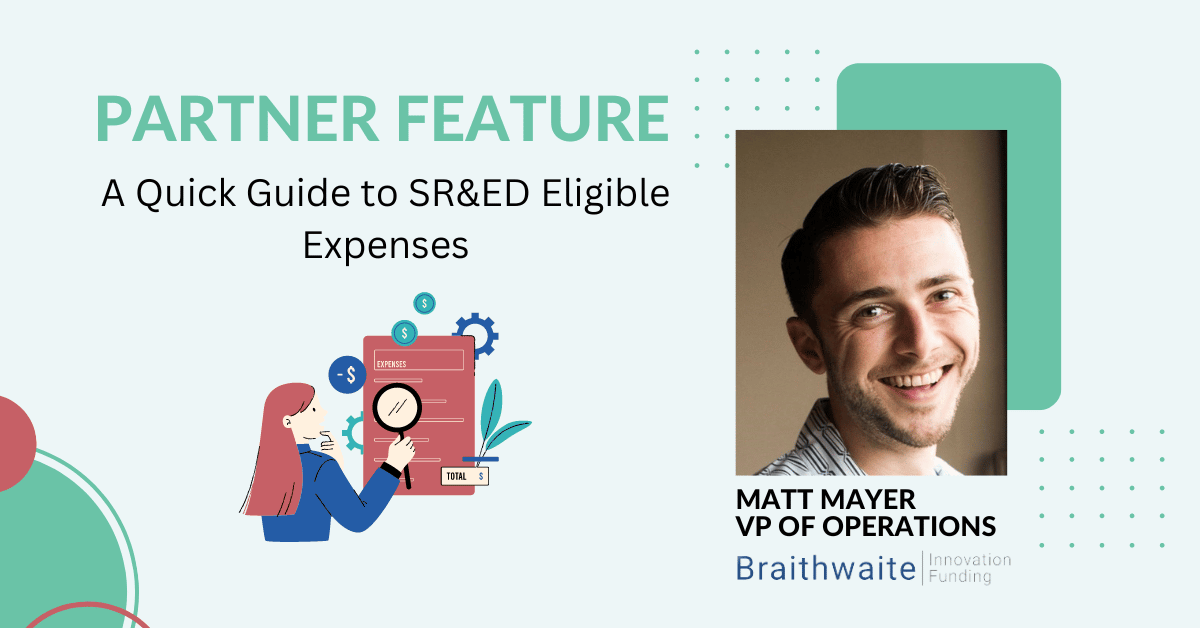The Scientific Research and Experimental Development (SR&ED) program is a tax incentive program used to encourage Canadian businesses of all sizes across numerous industries to conduct research and development (R&D) work in Canada. Regardless if you have a start-up, small business, or large enterprise, your company can take advantage of the SR&ED program as long as you meet the SR&ED eligibility criteria. If your Canadian company is working on an R&D-based project, you may be eligible for SR&ED tax credits! Next, we’ll walk you through a short overview of the SR&ED eligibility criteria. Continue reading to learn more about your company’s eligibility for SR&ED tax credits.
What is the SR&ED Eligibility Criteria?
When it comes to being eligible for SR&ED tax credits, there is a specific criterion your company must meet. The minimum SR&ED eligibility criteria are as follows:
- Technological Advancement: Your project must have furthered technical knowledge in some way.
- Technological Uncertainty: You must have faced technical challenges or uncertainties in your R&D work.
- Technical Content: You must have undergone a repetitious process to attempt and overcome those challenges or uncertainties.
The whole point of the SR&ED program is to support Canadian businesses in research and development. That means your company must attempt to break new ground to some degree. However, that doesn’t mean your project has to change the world or achieve massive monetary success to be eligible for these tax credits. Instead, the Canada Revenue Agency will use the following questions to help them determine whether your company’s project meets the SR&ED eligibility criteria:
“Was there a Scientific or Technological Uncertainty that Could Not be Removed by Standard Practice/Engineering?”
To pass this first question, your company will have to start a project doing something new or novel that attempts to overcome a scientific problem or technological hurdle. However, this new project cannot simply be a reinvention of an old solution; instead, it must attempt to solve a problem that cannot be solved by standard practices or engineering. Your company’s time on this project may qualify for the SR&ED tax incentive.
“Did the Project Involve Developing a Hypothesis Aimed at Reducing or Removing the Uncertainty?”
The SR&ED tax credit program is not offered to support random experimentation. Your project must be related to scientific research or experimental development. That means your company’s project must begin with a reasonable hypothesis about what may work based on the initial evidence available.
“Was the Adopted Procedure Consistent with the Total Discipline of the Scientific Method, Including Formulating, Testing, and Modifying the Hypothesis?”
The aim of this question for the Canada Revenue Agency is again to confirm that your project is not engaging in random experimentation but instead is following a scientific process. Moreover, your project’s approach should include a reasonable likelihood of resulting in new developments or scientific discoveries of some value.
“Did the Process Result in a Scientific or Technological Advancement?”
While this question is relatively straightforward, there are some points worth clarifying. Specifically, your project’s advancement must be scientific or technological. However, even if your project was unsuccessful in making a novel scientific or technological advancement, your company may still qualify for SR&ED tax credits. As long as your project faced a legitimate challenge, had a reasonable hypothesis, and followed a process like the scientific method, you still furthered the knowledge base within your company and discovered a non-viable method. This “failure” could perhaps lead to success in the future.
“Was a Record of the Hypothesis Tested and Results Kept as the Project Progressed?”
Often for many SR&ED applicants, this question is one of the more challenging questions to meet. Regardless of the nature of your project, it is critical that you document everything associated with your research and development while it is happening and not at a later date. When claiming SR&ED tax credits, your company must clearly show why each step of your project was necessary and how much time your employees or contractors spent working on it. Your company’s SR&ED tax credits are primarily based on reimbursing the cost of this time. That means you must keep track of timesheets, meeting minutes, and other critical documents validating your research and development work.
Finance Your SR&ED Refund Today!
At Venbridge, we finance accrued SR&ED tax credits so your business can receive that much-needed capital on a reliable schedule that fits your business. Instead of waiting months to receive your SR&ED refund, Venbridge empowers companies to maximize their SR&ED claims and provide them with capital in as little as three business days. Our team is here to ensure you get immediate access to the cash you need to grow your business instead of waiting.
If your SR&ED-eligible company is tired of waiting for your refund, contact Venbridge today!




